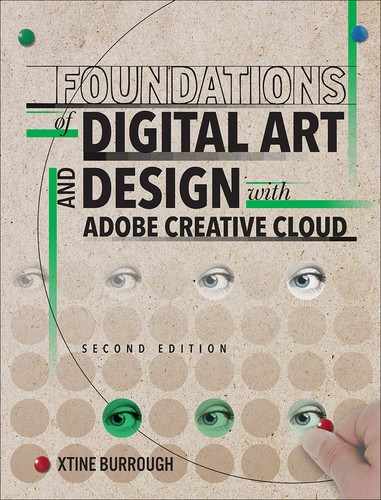Book Description
Foundations of Digital Art and Design, Second Edition
Fuses design fundamentals and software training into one cohesive approach!
All students of digital design and production–whether learning in a classroom or on their own–need to understand the basic principles of design. These principles are often excluded from books that teach software. Foundations of Digital Art and Design reinvigorates software training by integrating design exercises into tutorials that fuse design fundamentals and core Adobe Creative Cloud skills.
The result is a comprehensive design learning experience organized into five sections that focus on vector art, photography, image manipulation, typography, and effective work habits for digital artists. Design topics and principles include: Bits, Dots, Lines, Shapes, Unity, Rule of Thirds, Zone System, Color Models, Collage, Appropriation, Gestalt, The Bauhaus Basic Course Approach, Continuity, Automation, and Revision.
This book:
- Teaches art and design principles with references to contemporary digital art alongside digital tools and processes in Adobe Creative Cloud
- Addresses the growing trend of compressing design fundamentals and design software into the same course in universities and design colleges
- Times each lesson to be used in 50 to 90-minute class sessions with additional practice materials available online
- Includes free video screencasts that demonstrate key concepts in every chapter
Download work files and bonus chapters, view screencasts, connect with the author online and more; see the Introduction to the book for details.
"This ambitious book teaches visual thinking and software skills together. The text leads readers step-by-step through the process of creating dynamic images using a range of powerful applications. The engaging, experimental exercises take this project well beyond the typical software guide."
ELLEN LUPTON, co-author of Graphic Design: The New Basics
